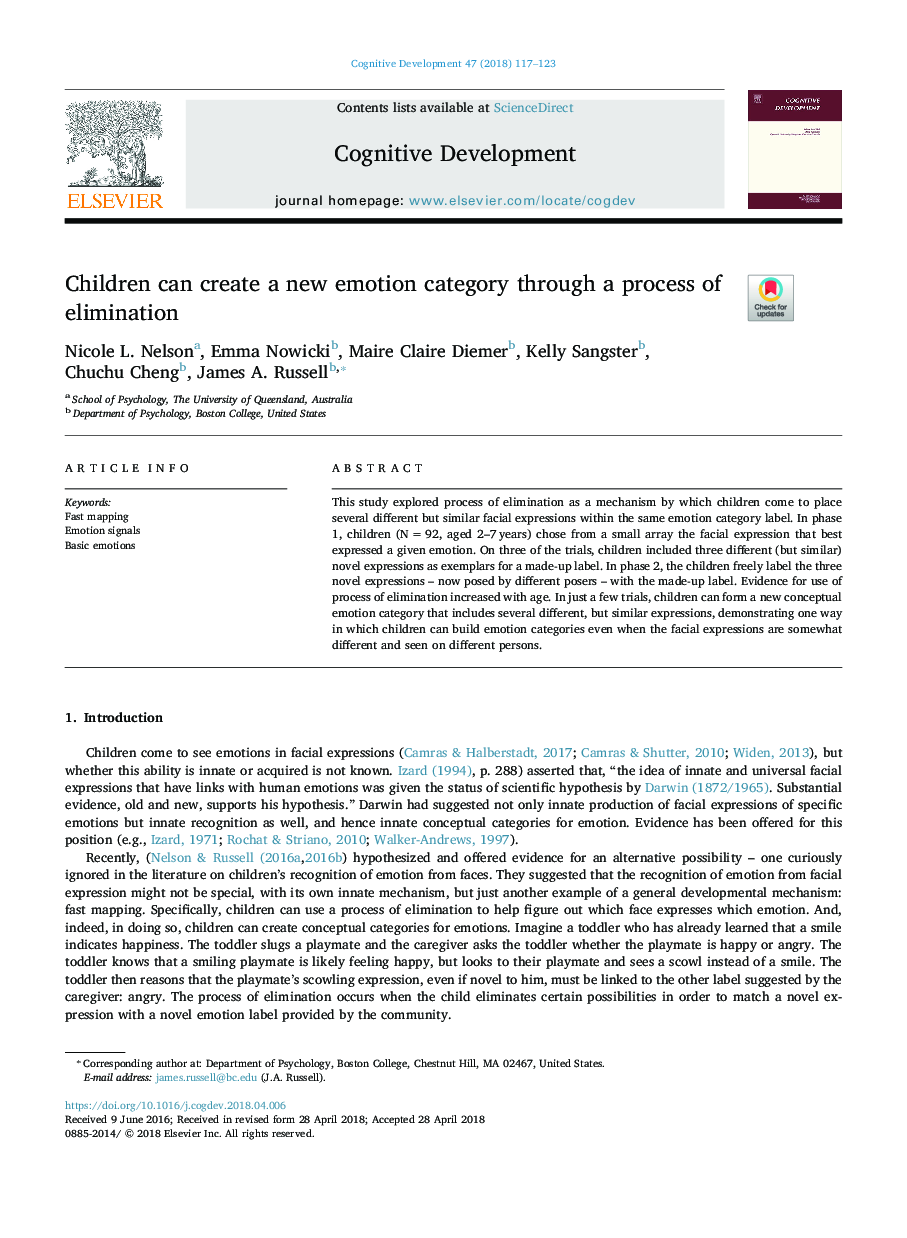| Article ID | Journal | Published Year | Pages | File Type |
|---|---|---|---|---|
| 7272136 | Cognitive Development | 2018 | 7 Pages |
Abstract
This study explored process of elimination as a mechanism by which children come to place several different but similar facial expressions within the same emotion category label. In phase 1, children (Nâ¯=â¯92, aged 2-7â¯years) chose from a small array the facial expression that best expressed a given emotion. On three of the trials, children included three different (but similar) novel expressions as exemplars for a made-up label. In phase 2, the children freely label the three novel expressions - now posed by different posers - with the made-up label. Evidence for use of process of elimination increased with age. In just a few trials, children can form a new conceptual emotion category that includes several different, but similar expressions, demonstrating one way in which children can build emotion categories even when the facial expressions are somewhat different and seen on different persons.
Keywords
Related Topics
Social Sciences and Humanities
Psychology
Developmental and Educational Psychology
Authors
Nicole L. Nelson, Emma Nowicki, Maire Claire Diemer, Kelly Sangster, Chuchu Cheng, James A. Russell,
